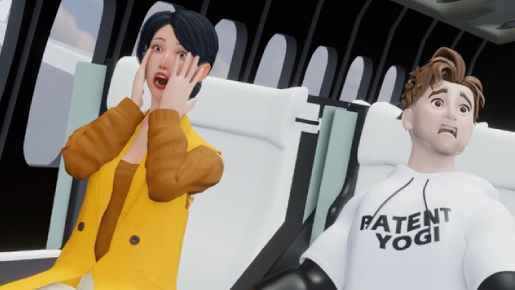A brilliant product isn’t enough. If it’s not patented, it’s vulnerable.
At 30,000 feet, even small problems can feel urgent. Like not knowing when you can use the restroom mid-flight. Passengers hover awkwardly in the aisle, waiting, wondering, hoping their turn comes soon.
But what if you could reserve your spot — right from your seat?
Boeing patented that exact solution: a smart restroom reservation system that reduces friction, improves comfort, and reimagines a basic in-flight experience.
It’s a small innovation. But it’s a big win — protected by a U.S. patent. And it shows why patenting “invisible” features might be your product’s most powerful business move.
🧠 Case Study: Boeing’s Patented Lavatory Reservation System
In 2019, Boeing was granted a U.S. patent for a lavatory reservation system that lets passengers:
- Check restroom availability in real time
- Schedule use without leaving their seat
- Avoid queues and awkward waiting in aisles
👉 View Boeing’s restroom reservation patent
What makes this case so compelling? It’s not just about engineering. It’s about user experience — and owning the tech that delivers it.
🔍 Why This Patent Matters (and Why Yours Might Too)
If your startup builds products that improve interactions — whether in software, hardware, or physical spaces — you’re sitting on potentially patentable IP.
You don’t need a revolutionary engine. Sometimes, it’s the workflow, the interface, or the system logic that makes a product shine.
These are the kinds of features Boeing secured — and the kinds that competitors can’t legally copy once patented.
💡 Is Your Product’s Experience Patentable?
Can I patent the way my app, tool, or device functions for the user?
In many cases: yes. If your solution introduces a:
- New method of interaction
- Smarter system behavior
- More intuitive user flow
…it may qualify for patent protection under utility or design patent categories.
Especially when tied to functionality (e.g., scheduling, automation, optimization), these improvements can become powerful IP assets.
🛠️ Pro Tip: Secure Early-Stage Ideas with a Provisional Patent
If you’re still refining your product, filing a provisional patent application gives you:
- A priority date to lock in your idea
- 12 months to test and develop
- Legal leverage if someone else tries to file first
It’s fast, cost-effective, and protects your innovation as you pitch, raise, and build.
🧩 Why Patent the “Small Stuff”?
Because the small stuff — like a queue-skipping restroom button — creates big user delight. And big user delight creates product loyalty.
If it’s a feature that:
- Keeps users coming back
- Gets you featured in product demos
- Makes your UI stand out in investor decks
…it’s probably worth protecting.
📞 Build Smart. Patent Smarter.
Boeing didn’t just make flying smoother — they secured the experience. Now, others can’t copy it without a license.
You can do the same.
At PatentYogi, we help innovators like you identify what’s patentable, file fast, and stay one step ahead.
🎯 Book a free patent strategy call today — and turn your smart feature into protected IP.
If it improves your product, it’s worth protecting. Don’t let the “small features” slip through.
PS: What’s one small UX improvement your product does better than anyone else?
👇 Drop it in the comments — and we’ll tell you if it’s potentially patentable.

